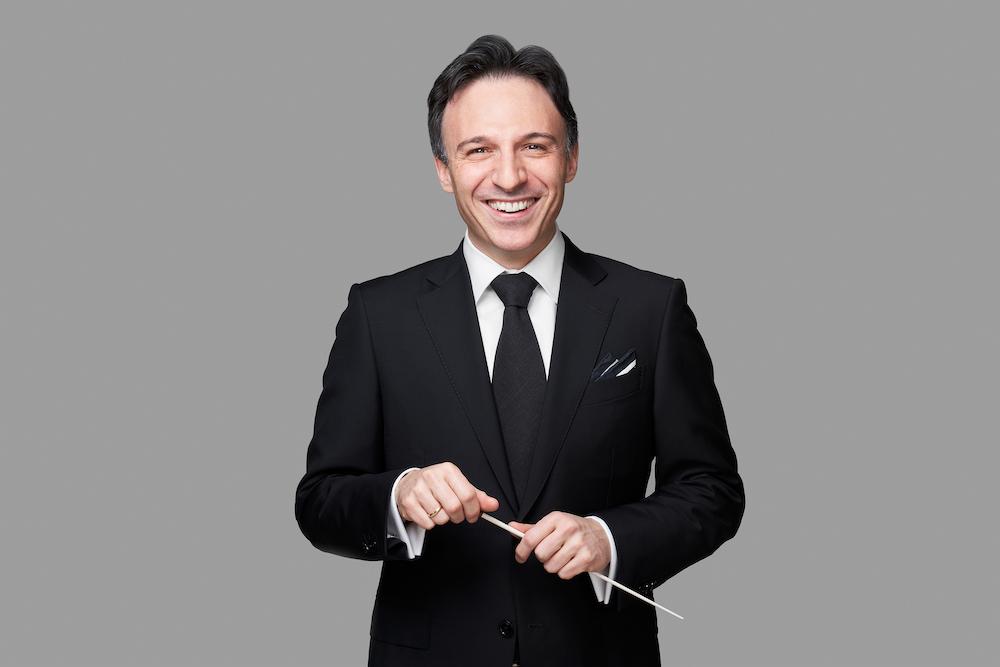
Umberto is currently the Chief Conductor of the Queensland Symphony Orchestra, and in March he visits ANAM to lead the ANAM Orchestra in its first orchestral project of the year, including a family friendly Community Concert hosted by ANAM alum Rollin Zhao. Umberto recently took some time out of his busy schedule to share more about the program he has curated.
You’ve programmed a really interesting concert for your return to ANAM in just a few weeks’ time. What inspired you to group these three composers?
My main goals when programming this week were the variety of styles and the relevance of each language. The young musicians at ANAM are very advanced and it is very important that they are exposed to a wide variety of experiences and sound worlds. The difference between Beethoven’s continuous energy in rhythm and grand gestures, and the nuances in Ravel’s countless shades of dynamics is incredible. Being able to express them both technically and emotionally within the same concert is an enormous task for young musicians.
Of all the orchestral works you could have chosen, what drew you to Beethoven’s Third? And why do you think it’s a worthwhile symphony for young musicians to play?
There is nothing as quintessentially Beethovenian as the Eroica, in my opinion even more than the 5th and the 9th symphonies. The leap that Beethoven took with it, compared to his previous symphonies, is unimaginable and I am convinced that young artists should have the time and the right number of rehearsals to understand it more deeply. Poetically, Eroica is the first ever symphony to express themes much bigger than the music itself: the French revolution ideals, freedom from tyranny for the human society, Beethoven’s own testament (in the Funeral March). Technically, however, it was revolutionary for the proportions of the form; expanded like any other orchestral piece before, the abnormal use of sforzatos and dissonant chords, the disruption of the metric.
This is your first time visiting ANAM with your conductor ‘hat’ on. How is preparing for this residency different to your last in 2019?
The preparation is very similar but I am using the time that I was previously dedicating to the cello to study the scores more deeply. For me, there is also a general idea of respect for the only “musician” on stage who is not producing sounds. This respect comes from spending 20 years in an orchestra and realising that the conductor is not dealing in real time with strings, bowings, intonation, legato and staccato, reeds, rosin etc, so they need to be the most prepared, focused and passionate about the music that the musicians are playing.
What does a ‘typical’ rehearsal with Umberto at the helm look like? What can the ANAM Musicians expect in the rehearsal room?
I am quite a thorough “rehearser” for sure. I apply this to both the best orchestras in the continent as well as to youth orchestras equally. For me the goal doesn’t change, but the final result might get closer or further depending on the capabilities and the time we have at our disposal. The reason why I insist on rehearsing is because I truly believe the conductor’s job is to prepare the orchestra, expand the musicians’ knowledge of other instruments (their knowledge of their own is usually very good) and create a clear musical scaffolding. A concert is the moment for the orchestra to shine and if rehearsals are done properly, that is then the time to be free.
Not including the pieces on the program, are there any works you’d suggest the audience listen to before the performance to get them in the mood?
I really recommend listening to Beethoven’s 2nd symphony because it was a very ambitious work for its time, with the longest introductory adagio ever written, 3 movements in sonata form, and a very surprising scherzo. It is not often played nowadays because it is very technically difficult but also because Eroica changed everything forever…
As for chamber music repertoire, I would encourage audiences to listen to the Appassionata sonata for piano and Kreutzer sonata for violin and piano, both composed within the same stream of creativity as that of Eroica.
I would also recommend listening to the 4 hands piano version of Mother Goose (that is the original version of the piece) in order to understand and appreciate its structure and its incredibly sophisticated orchestration.
John Adams has many great pieces – to connect to the Short Ride in a Fast Machine, I suggest listening to Lollapalooza – a piece that I’ve always found very fascinating.
Photo by Jay Patel
This interview is an excerpt from the upcoming Music Makers Vol. 46. Read past volumes here.
UMBERTO CLERICI: EROICA
Sat 18 Mar 2023, 7PM
St Kilda Town Hall